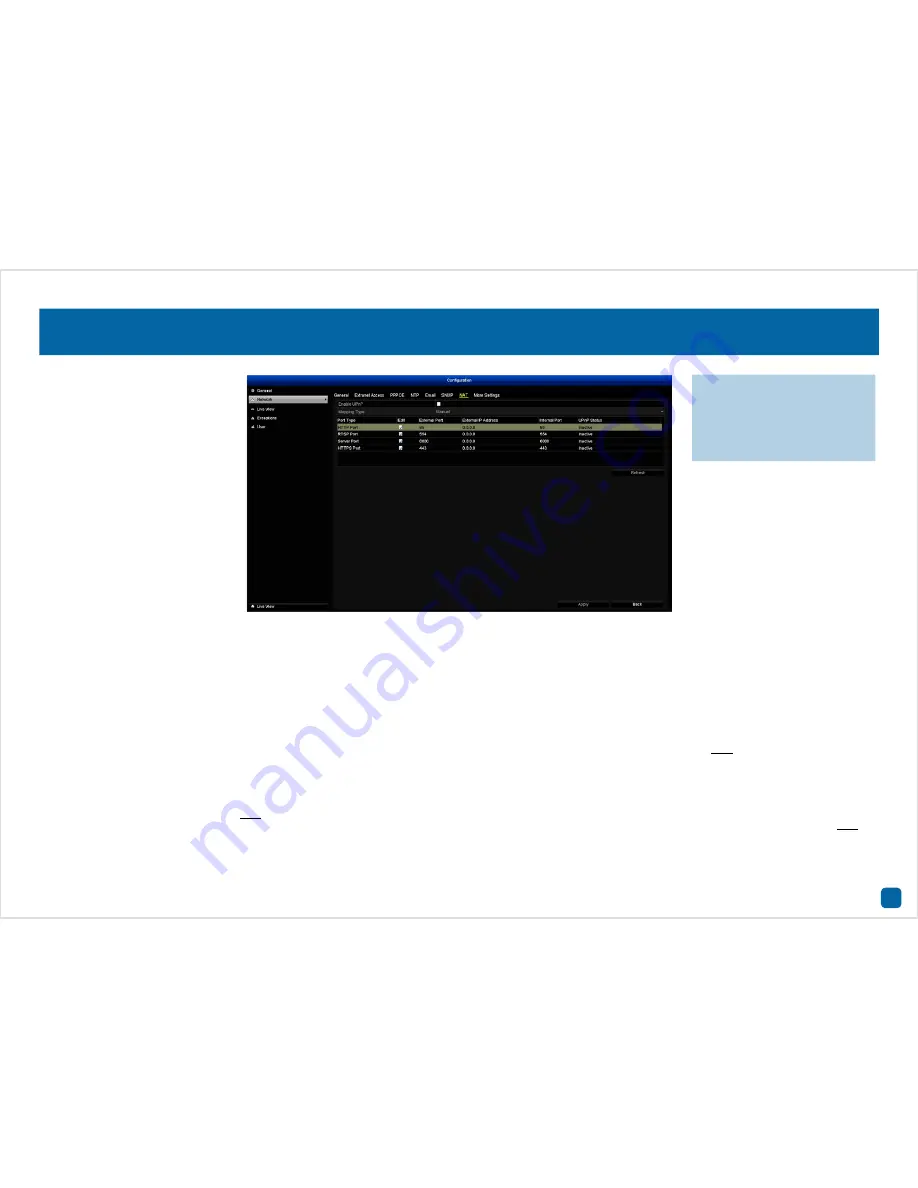
47
Configuration: Network - NAT
In most circumstances there is no need to change the settings here. The
following is for advanced users only.
Enable UPnP:
Click the checkbox to enable.
Mapping Type:
Depending on how your network has been configured,
select either “Manual” or “Auto”.
HTTP Port:
This port is used to log into your DVR via your network or
remotely. The default port number (85) is seldom used by other devic-
es, however if you have another device using this port, you may need to
change it. An alternative port number to use is 90. Make sure that the
number used for the External Port and Internal Port both match, other-
wise the UPnP function will not work.
RTSP Port:
This port is used to stream real-time images to your mobile
device. If you’re having issues streaming video to your mobile device
or your mobile service provider is blocking access, we recommend to
change this to 5554. Do not change this if everything is working.
Server Port:
This is the internal port that your DVR will use to send
information through. This particular port number (8000) is not used by
many devices, however if you have another DVR-like device, you may
need to change it. An alternative port number to use is 9000. Make sure
that the number used for the External Port and Internal Port both match,
otherwise the UPnP function will not work.
HTTPS Port:
Basically the same as HTTP Port but with an additional
layer of security. The default port number (443) is seldom used by other
devices. Make sure that the number used for the External Port and In-
ternal Port both match, otherwise the UPnP function will not work.
·
Don’t forget to click “Ap-
ply” to save settings.
·
Click the “Back” button to
go back to the Menu.






























